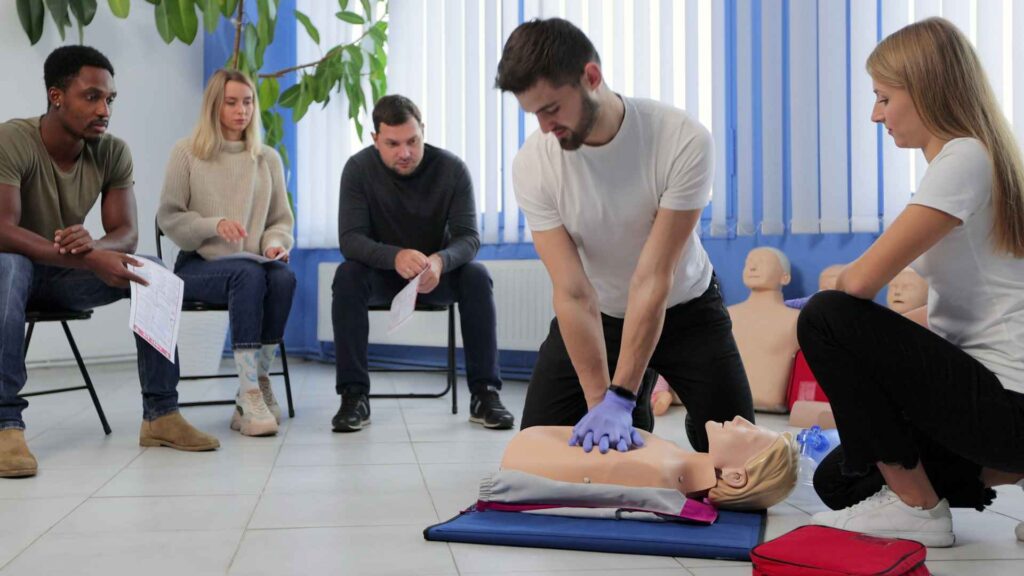With cardiac arrest being among the leading causes of death in the United States and Canada, there hardly seems to be a need for more reasons to get a CPR certification.
Then again, there are misconceptions that make people linger on this decision and keep someone away from CPR courses.
It is the purpose of this blog to alleviate several of those misconceptions and show our readers that a CPR certification is as essential as a driver’s license. Unlike a driver’s license, however, you need your CPR skills all the time, not just behind the wheel.
How to do CPR in less than a minute?
In this YouTube short, viewers will swiftly learn crucial CPR techniques in less than a minute. The tutorial simplifies the steps of cardiopulmonary resuscitation (CPR), emphasizing straightforward steps to perform effective chest compressions and rescue breaths. Whether you’re new to CPR or looking to refresh your skills, this video offers clear guidance and practical tips to equip viewers with the ability to respond confidently in emergencies. Gain essential knowledge to potentially save lives with this quick and accessible CPR tutorial.Why CPR courses are essential?
So, without further preludes, let’s go over the five main reasons that CPR courses are important for everyone.1. CPR courses save lives
If we examine the statistics, a great deal of potential deaths were prevented not by a paramedic team but by a regular person with CPR certification. Having someone around who knows this life saving technique is often literally the only way to come out of cardiac arrest alive. The reason for this is that when in cardiac arrest, the victim’s heart is not delivering blood to his/her brain and the clock is pounding out seconds until brain damage becomes irreversible. The average time it takes a 911 crew to arrive at the scene of a medical emergency is more than the victim can endure in this condition. When you are out in a park hiking or camping, the distance to professional medical help increases and so does the need for more people around you to know CPR.2. Despite its importance, not enough people know CPR
Ask your friends and co-workers who knows this technique – that’s the number of people who will be able to save your life in case of cardiac arrest. Bystander CPR cases are at 15-30 percent, and those are the ones that show the highest survival rate.3. Learning CPR is easy
You don’t have to acquire profound medical training and spend lots of time on it. CPR certification is usually wrapped up in one day of training where theoretical knowledge is then applied in a simulation CPR delivery.4. There’s no real need to give mouth-to-mouth CPR
According to the AHA CPR guidelines of 2015, mouth-to-mouth resuscitation is not essential for the technique to work. Chest compressions without breathing assistance work more or less just as well, and, as we just stated above, they are easy to learn and easier still to administer.5. Most cases that require CPR happen in homes
Where you and your family are likely to be the only people present. If this happens to your spouse or child, your best chance of saving their life is to have taken one of our CPR courses. We are here for you, and can teach you to be there for others. Call us now and get on board.Register for First Aid Training
Register today for a First Aid Training course and learn how to deal with emergencies and keep your loved ones safe! Check out our facilities and book your spot now.




















No comment yet, add your voice below!